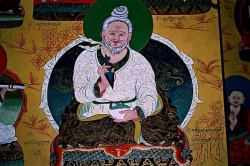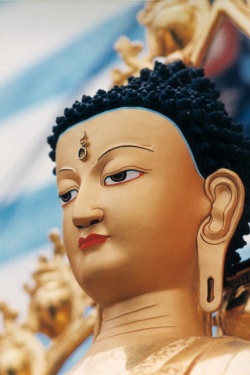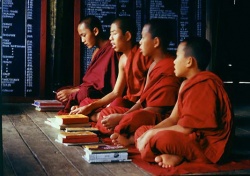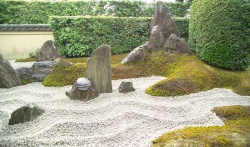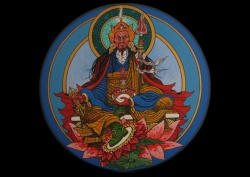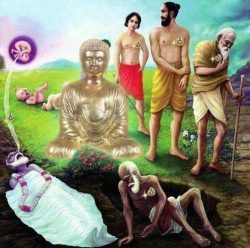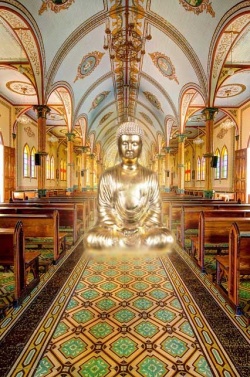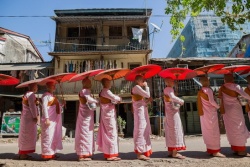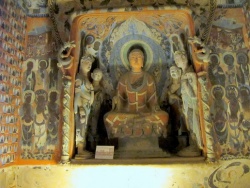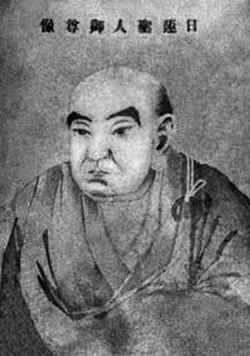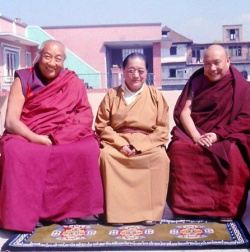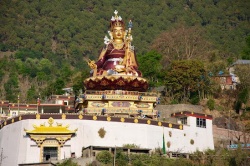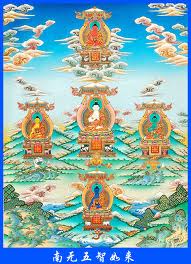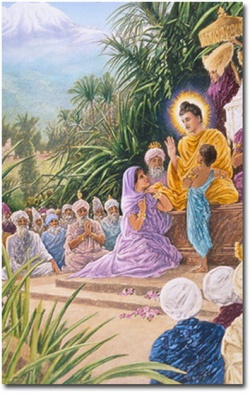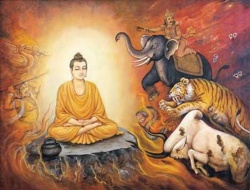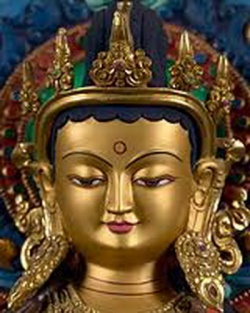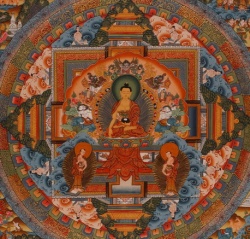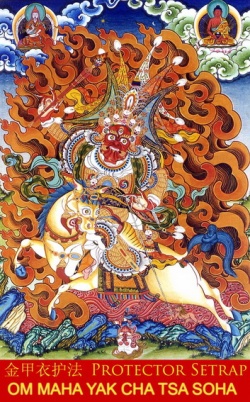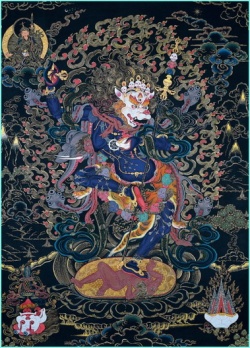How can we follow the Buddhist Dharma and uphold the lineage?
I would like to briefly explain this, because people need to know the importance of these two key points.
Otherwise they will be wasting their time and their life.
The Buddha gave the teachings of the eighty-four thousand Dharma Gates because sentient beings have specific individual negative obscurations and each teaching was a specific antidote for that sentient being.
The eighty-four thousand teachings all together are designated as the Tripitaka.
In actuality the Tripitaka is the most profound and supreme among teachings.
To have a commentary on a Sutra or Tantra spoken by the Buddha himself is very rare, these commentaries taught by the Buddha are known in Tibetan as Ka.
Most of our commentaries have been made by Enlightened Masters and Bodhisattvas.
Three types of individuals are qualified to write commentaries:
1. those who have realized emptiness and entered into the Bhumis.
2. Those who have had a vision of the deity in which they recieved teachings and permission to reveal those teachings.
3. Those pure lineage holders who have reached accomplishment as well as mastered the five sciences.
In short, those who through practice have reached liberation for themselves and through compassion work for the liberation of other beings. Any commentary written by one of these three types of individuals possesses powerful blessings.
The Great Vidyhadaras Padmasambhava, Rongzom Maha Pandita, Longchenpa, Jigme Lingpa, Patrul Rinpoche, Khyentse Wangpo, Mipham Rinpoche, Dudjom Rinpoche and Dilgo Khyentse Rinpoche all possessed all three qualities necessary to write a commentary.
This is true of the masters of other great lineages as well.
These commentaries are called Shastras and were composed by the Buddha’s disciples, the Panditas.
The power and blessings of these Shastra should never be considered as less than that of the Sutras and Tantras.
Their reincarnations in Tibet also composed Shastras.
The writers of these commentaries both in India and Tibet were not ordinary beings.
The difference is this, the minds of ordinary beings are both smart and stupid, but these great noble beings are not at all like that, their minds are pure wisdom.
Pure wisdom means that both without and within these beings minds are totally pure, free from all negative emotions.
In this degenerate age, almost any regular person can be found writing commentaries, composing sadhanas and works that are not sutras, tantras or shastras in many beautiful words, but these words are empty of meaning and power.
For example these words are like a beautiful woman who is totally blind.
These authors may think they are being of service to beings through these activities but actually they are not.
Texts empty of meaning cannot work to transform the minds of sentient beings.
During the Buddha’s time the Vajrayana was not openly taught.
Tantras such as Kalachakra, Chakrasamvava and others were treasured as secrets. During the Buddha’s time the karma of beings in general was not deeply negative therefore there was not a great need for the Vajrayana to be taught on a wide scale.
In the tantras it is said that when the question was brought before the Buddha, “Why do you not teach the short path the Vajrayana?”, the Buddha gave the prophecy “In one hundred twenty-two years time my reincarnation Guru Padmasambhava will come to the country of Oddyiana.
He will openly teach the Vajrayana and will be the Lord of the Vajrayana lineage holders.”
Although there are many schools of Buddhism such as Hinayana, Theravada, Zen, Mahayana, the Kagyu, Sakya, and Gelug, they all teach only particular aspects of the complete Dharma, however, all nine vehicles of the Dharma are contained within the Nyingma Lineage of Buddhism.
That is why great masters like His Holiness Sakya Trizin have said, “We must respect the Nyingma Lineage, study it and have devotion to Guru Padmasambhava because the Nyingma Lineage is like the Grandparent and the other lineages are like the grandchildren.”
I suggest we need to respect each other as members of one family. We need devotion for each tradition as students of one teacher. All who truly uphold Guru Rinpoche’s lineage are worthy of veneration.
In the Tantra Jampal Tsagyud, the Buddha Prophesied, “My Buddhist Doctrine will multiply from south to south to the people of the Red Face, where it will increase greatly.” The Red Faces are the Tibetan people. In past times Tibet was a land of darkness and barbarity. Then in the Eigth Century C.E.
Manjushri manifested as King Trisong Detsen who invited Guru Padmasambhava possessed of the qualities of one thousand Buddhas, to Tibet while Vajrapani manifested as Khenpo Shantarakshita.
At the same time these three great Buddha manifestations were in Tibet, they transmitted the entire wealth of the Buddha’s teachings from India to Tibet.
Vairotsana, the manifestation of Buddha’s supreme disciple Sariputtra and Chok Rog Luyiy Galtsen the manifestation of the disciple Ananda were reborn in Tibet and were recognized by Guru Rinpoche himself.
They learned Sanskrit from Santarakshita and afterwards were able to speak three hundred languages. Through miraculous means they were able to undertake the journey to India in a single day.
All the Tripitaka, translated into Tibetan in 108 volumes, is known as the Kangyur.
The great Mahasiddhas of the Dzogchen Lineage: Guru Rinpoche, Vimalimitra, and Vairotsana brought the Vajrayana teachings of Dzogchen.
Also many different Shastras were transmitted to Vairotsana and other translators.
Through a great act of generosity King Trisong Detsen sponsored in full this great translation effort.
Guru Rinpoche in Tibet gave empowerments on many tantric teachings and transmitted texts directly from the Buddhafields.
During that time Guru Padmasambhavas twenty-five disciples attained accomplishment and each attained different miraculous powers. Eighty in the place of Yerwa also reached accomplishment.
In Chupori were the twenty-five Yogi’s.
All of them attained the Rainbow Body and were Guru Padmasambhava’s supreme disciples.
During this Golden Age practicioners throughout the world recieved the immeasurable blessings of Guru Padmasambhava’s compassion.
He hid many Vajrayana texts as treasures for the benefit of the practitioners in the future and to ensure that the lineage remained unbroken.
If the treasures had not been revealed many lineages would have been lost.
That is why in his great Omniscient Wisdom the Guru provided for the treasures to be revealed.
Those who were to reveal the Terma’s were mostly emanations of the 25 disciples and details about their birth such as time and place and names of their father and mother were prophesied beforehand.
Terma’s are revealed by Great beings after a request has been made. Some are requests to Mahakala, others to the Dakinis and some to powerful spiritual deities.
The Terma’s we have would not have been revealed had these request not been made, this is in accordance with the principle of interdependence.
Khenpo Shantaraksita gave the monk vow to practitioners from many nations.
All monk vows and Bodhisattva vows held today in Tibetan Buddhism come from his lineage.
All Vajrayana vows, Samaya and Empowerments come from Guru Rinpoche’s lineage.
These vows still exist and have use today. Through oral transmission the teachings of the Tripitaka also exist and have use today.
Most people do not recognize the kindness of these masters who are the source of their lineage. There are four Tibetan Buddhist traditions but their distinct transmissions come from only one source.
We need to respect each other, if you don’t have respect, your own lineage becomes broken.
If you are practicing Dharma inside a broken lineage then something is wrong and even if you practice for many Kalpas you will not reach enlightenment.
Broken lineages corrupt the purity of the Sangha.
We can follow the Dharma and uphold the lineage by recognizing the kindness and greatness of the past masters who are its source.
Now some peoples thinking is without a valid basis, as in this example often used by Mipham Rinpoche,- if I force someone to drink from a cup and say it is a clean cup because a close relative drank from that cup;
similarly some people think ‘My tradition is good and you should follow only it because it is my tradition’,
it is egotistical and they do not recognize the single source of all lineages or know of the kindness of the past masters.
When Guru Padmasambhava and Khenpo Shantaraksita and King Trisong Detsen were together in Tibet it was like bringing sunshine for the first time into a land of darkness.
Their kindness if it were to take form as an object would not fit in this world.
It is a demon that causes some people to have blind faith without recognizing the past kindness that makes the lineage great.
If you do not think of the past kindness of the masters with respect you may think your lineage is great but in actuality it has become spoiled.
When the Kadampa master Jowo Atisha arrived in Tibet at Samye Monastery and examined the library catalog, he discovered texts unknown to him in India;
immediately he was filled with tremendous devotion and began to physically prostrate praising the immense kindness of Guru Rinpoche, Vairotsana, and King Trisong Detsen in preserving these most precious texts.
If you would like to know more of this story of Atisha he himself wrote a book recounting his experiences in Tibet.
In the Gelupga lineage one can read in the books of the founder Je Tshongkapa about the kindness of Guru Rinpoche and the teachings he brought to Tibet.
Je Tshonkgkapa wrote prayers of respect to Guru Rinpoche out of appreciation for his vast kindness. The Sakya Pandita also composed many prayers motivated by his great devotion to the Guru.
The Kagyu master Drukpa Kunkhyen Pekar also composed many respectful prayers to Guru Rinpoche.
If you don’t believe me or would like to know more, please consult the collections of writings of these past great masters.
If you do not study these works and recognize the past kindness of masters such as Guru Rinpoche, and only criticize others, this is the result of your own stupidity from not having studied the writings of the great past masters.
We need to know the meaning of what we follow. If you don’t know the meaning it is just like one dog seeing a shadow and all the other dogs joining in a barking chorus just because that one dog started barking.
If your knowledge is of this type, it is called academic knowledge. This type of knowledge brings more obstacles.
In the Nyingma tradition there are two types of lineage called Kama and Terma.
Kama is the unbroken chain of realization from Samantabhadra to all the Nyingma lineage holders up until the present day.
It is known as the long lineage.
The Terma lineage manifests from Samantabhadra to his disciple Vajrasattva on to his disciple Garab Dorje on to Jampal Shinyen to Shri Singha and then Guru Rinpoche who passed them on to his twenty-five disciples who attained accomplishment.
Supreme among them was the Dakini Yeshe Tsogyal who requested of Guru Rinpoche to transmit important teachings from the lineage as Terma texts for those who would benefit by practicing from this short lineage.
Guru Rinpoche prophesied of 128 Tertons who would reveal these hidden Termas in the future.
Each Terton had different prophesied activities however these activities did not contradict with each other and had the same essential meaning. Some people have made the mistake of thinking of the Termas with impure perception,
regarding some Termas as better than the others.
This is a mistake because all the termas have the same intent, all come from Guru Rinpoche, all of them are necessary for the benefit of the teachings, and all of them without exception are meaningful.
If your are a serious Buddhist then you must think of the kindness of the past masters.
All the power and all good qualities come from the lineage of the past masters.
The sutra and Tantra traditions of Buddhism are not secluded in Tibet only, they have spread to and multiplied in all parts of the world.
The Nyingma tradition is still a pure and unbroken lineage because even up till the modern day practitioners have been found attaining the rainbow body and leaving relics at the time of their death.
These are not only stories but are truly verifiable. This can happen anywhere, not only in Tibet.
The power for these miraculous attainments comes from the blessings of the lineage of Buddha Shakyamuni,
the Second Buddha Guru Rinpoche,
Khenpo Shantarakshita,
Vidhyadahara Rongzom Maha Pandita and masters such as
Longchen Rabjam and his lineage holder Kunkhyen Jigme Lingpa on through the lineage to
Patrul Rinpoche to Khyentse Wangpo,
Jamgong Kongtrul Rinpoche and
Mipham Rinpoche on to Khatok Situ Rinpoche to
Shechen Gyaltsap Rinpoche to
Dzogchen Khenpo Shenga to
Dudjom Lingpa.
We must also think of the kindness of the great masters of the Twentieth Century such as Jamyang Khyentse Chokyi Lodro, His Holiness the Dalai Lama the XVI Karmapa and secondly the kindness of our own masters this very day.
After the Tibetan Uprising, their disciples such as Kyabje Dudjom Rinpoche and Kyabje Dilgo Khyentse Rinpoche made the trek from Tibet to India, Nepal, and other outside countries.
The most precious Dharma was destroyed in Tibet and is in danger of no longer existing.
Knowing this Dudjom Rinpoche compiled at his own expense a collection of the Nyingma Kama and many other important texts and made them available to the public.
Dilgo Khyentse Rinpoche compiled all the Nyingma lineage’s Terma and many important texts and made them public.
These texts are used by practitioners around the world.
Without them so many practices, empowerments, and texts would be lost to us.
That there are still practitioners today has all come about through their kindness.
Since 1959 and the Dharma’s migration to outside countries where monasteries and Dharma texts did not exist, the Dharma has been miraculously transferred.
At the same time these masters continued giving teachings, empowerments and transmissions, constructing monasteries and providing for monks and practitioners.
Because of the work of these great masters the Nyingma lineage right now is very rich(many empowerments and teachings still exist upheld by accomplished practitioners) and pure (Lineage holders who have reached accomplishment exist).
Mingling Trichen Rinpoche is a good example now, he has nothing but pure perception, even if outside he appears to sleep inside his mind is in the stage of accomplishment.
Also the great masters Chatral Rinpoche, whose perceptions are without the slightest preference or attachment, and Dodrupchen Rinpoche, who is a great Nyingthig Vidyadhara have constructed retreat centers in India, Nepal, and Bhutan and people from across the world participate in retreats there.
These Rinpoches still to this day give profound teachings and empowerments.
That we still have the tradition of the three years retreat is due to the master’s kindness.
Tulshik Rinpoche and Taklong Tsetrul Rinpoche are like Shariputra and Ananda in this world.
They are upholding the monastic tradition in countries outside of Tibet by providing many people with the monk and nun vows.
If they did not exist there would not be the monastic lineage today.
Drubwang Penor Rinpoche who is a lineage holder who has given many lamas their monk vows, constructed a shedra, a Buddhist monastic university, inviting many important lamas to give rare and important teachings.
At that time Nyingmapa Khenpos were very rare and the teaching of Buddhist philosophy was not prevalent.
Now everywhere Buddhist philosophy is taught and monastic universities are established with many Khenpos in existence due to the kindness of his activity.
Dungsey Thrinle Norbu Rinpoche who lives in the west is a hidden yogi and is a good example to all lamas of this day because he has great realization and compassion for other beings .
He has great realization and is an accomplished master.
Now the disciples of these great masters continue the lineage through their teachings.
The Nyingmapas has six principle monasteries containing the wealth of the Buddhist teachings, after the Tibetan Diaspora these masters were the ones to rebuild these monasteries in India and Nepal.
The wisdom of the Vajrayana teachings is provided to the world through these new monasteries. Without these monasteries pure lineage holders could not exist.
These six monasteries are like the sun and the moon, useful to everyone.
Now any kind of Lama is building monasteries and establishing Dharma centers, however, these new centers are not as important because there is no lineage holder to teach at them.
What is most important is for people to become true Dharma Practitioners.
It is very important to provide help for peoples Dharma Practice and their development of wisdom and compassion, just building monasteries is not so important.
The Nyingma masters and practitioners stay hidden and develop their wisdom and after reaching accomplishment come to be renown, unlike masters such as Yogananda who laud their realization widely and at a young age.
Teaching for fame is not the Buddhist way.
If you are really a serious Buddhist student then you will think of the kindness of these masters.
To think only of your own teachers kindness is a misinterpretation because your teachers wisdom came from the wisdom of the past masters.
Why does the Buddhist doctrine exist today? It is because of them.
The light of the sun reaches everywhere while the light of a bulb only lights our homes.
Don’t forget the past masters, if you remember them then all the lineage will bless you.
There are two types of Buddhist practitioners, First those who only talk about the teachings constantly and do not practice.
These types become very smart and discipline themselves in pride. They are egotistical and sneaky.
This kind of person will never become enlightened.
This is why the higher teachings should be treasured as secrets. Second are practitioners who receive teachings, seriously practice and follow the Dharma.
These people become more humble and better people attaining more and more good qualities.
Don’t become a false Sangha.
Nowadays some lamas, Khenpos, and Tulkus teach a commercial dharma to satisify the desperation for true Dharma teachings in this world, selling the very precious Dzogchen texts and making Dzogchen teachings public.
They do this because they are desperate for money.
This is destroying the Buddhist doctrine. Buddha and Guru rinpoche both said, those who do this are mara manifestions.
There is no need to respect or follow these people. By following them you will never reach enlightenment.
In the Buddhist tradition there are Mahayana and Vajrayana lineage holders.
In Vajrayana some tertons have a consort.
These consorts are called Khandros and not everyone is able to practice this way.
In the Sutra is included Mahayana, Hinayana and Theravada lineages.
Holding the lineage means holding Monk’s vows and providing these vows to others.
This is the meaning of Khenpo.
Even the Dalai Lama can be called a Khenpo because he holds and provides the monk vows.
Khenpo means a monastic lineage holder in the tradition of the Vinaya.
If a Khenpo has wives or girlfriends they are not really Khenpos and should be designated as Lamas.
From the beginning of the Buddhist doctrine 2600 years ago this situation of Khenpos taking wives and girlfriends has not been observed. By using these titles for such teachers you are destroying the Buddhist Doctrine.
It is of great shame to them and the Buddhist community.
Serious Buddhists will not accept you if you follow those who incorrectly use the title of Khenpo.
For example if I am not a certified pilot or doctor and use those titles then I am a fraud and a shameful person.
My true wish is for us to think of the Buddhist Doctrine and uphold and protect its purity because we are not the last sentient beings others in the future will have to rely on the Buddhism that we transmit.
This is why I am writing this for my western Dharma students and those eastern people who are ignorant of these issues. The world is becoming polluted and the Buddhist doctrine needs to be cleaned and tended to.
Do not consider me a demon because of these criticisms. this quality of discerning the false from the true comes from the past masters and I want to provide my concerned opinion for everyone who is serious about the Buddhadharma.
Whether you believe or disbelieve me does not matter to me, my awareness is on the teachings of the great past masters.
If you concentrate your mind and sincerely follow this advice I would be most grateful.
Do not become critical, if we practice Dharma seriously, then our understanding of the meaning of this teaching will become the same.
This was written in Salt Lake City out of necessity after observing some people who held wrong attitudes toward the Dharma teachings..
Lama Osel 2008
